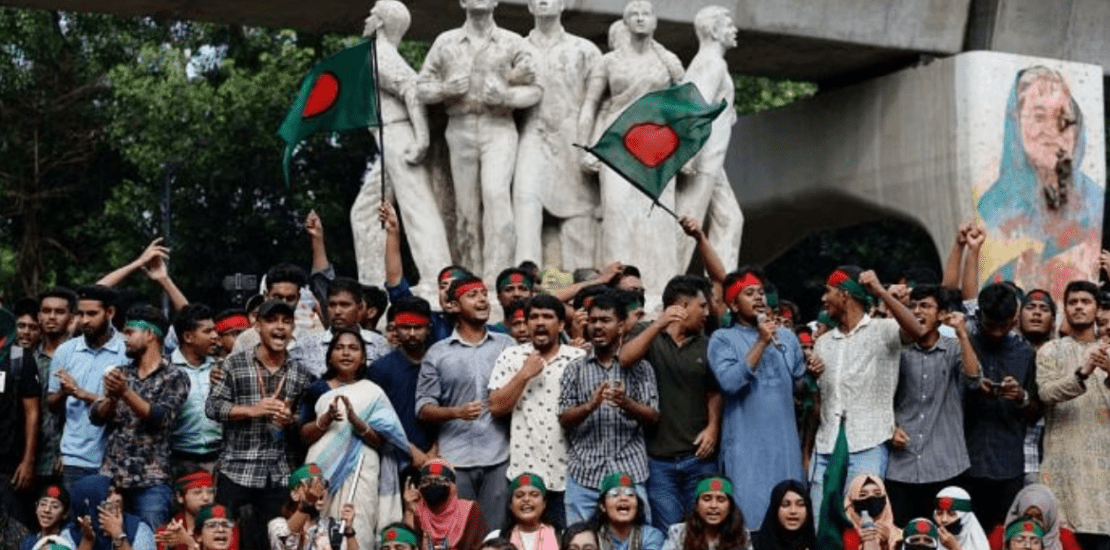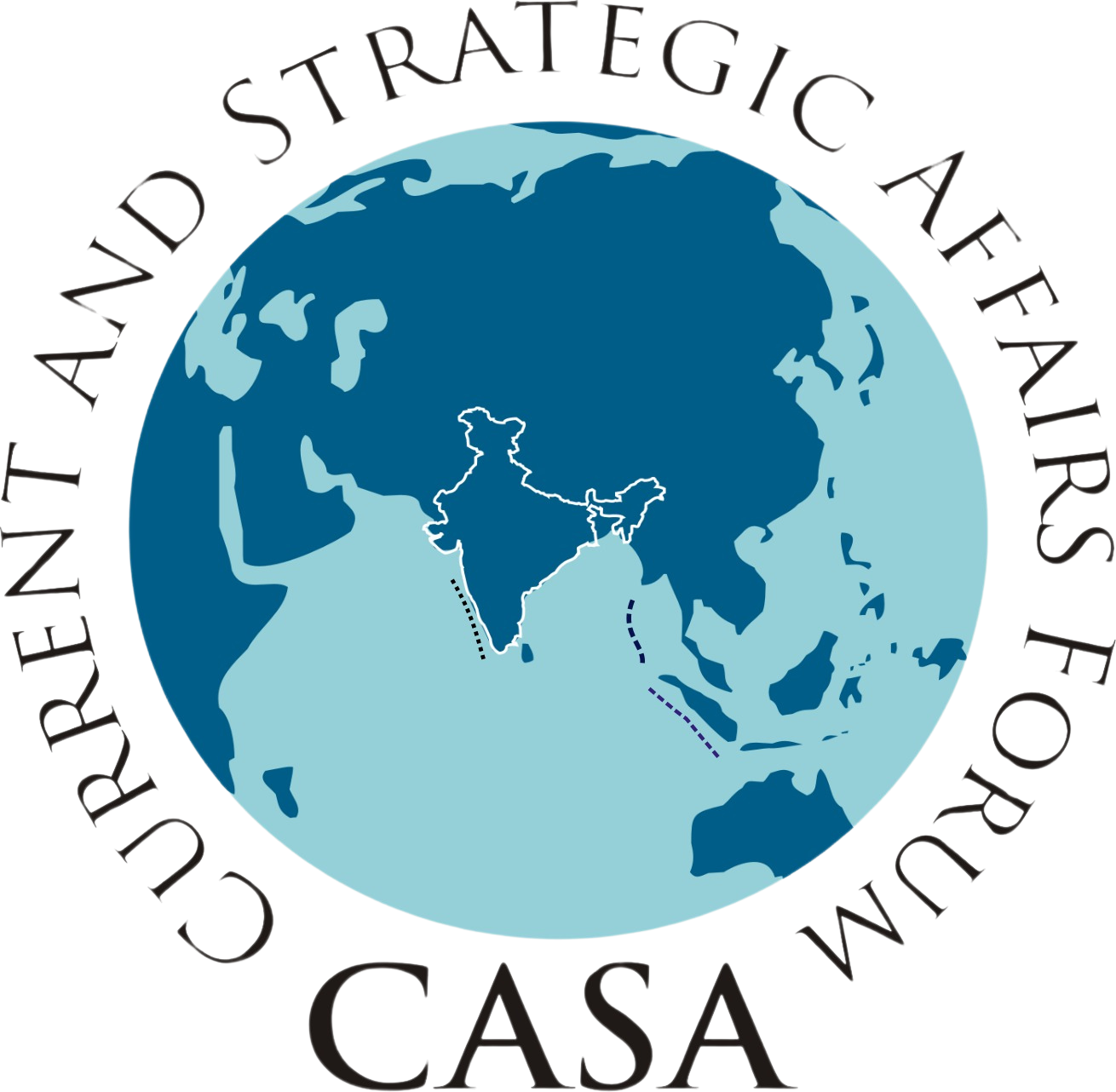Bangladesh, Myanmar pose new security threats for India—domestic politics isn’t helping either
- February 17, 2025
- Posted by: Lt Gen (Dr) Prakash Menon (Retd)
- Categories: Bangladesh, India, Myanmar

Earlier, terrorist attacks emanated from Pakistan. Now, there is the possibility of Bangladesh too promoting anti-India activities. Worse, the two could work in unison.
Lt General Prakash Menon
Arecurring feature common to some of India’s neighbouring countries has been their changing political landscape. This has been the story since 1947. There have been occasions when India experienced political churns of its own, but it has largely been able to maintain the requisite stability.
From a strategic perspective, China and Pakistan have perennially posed territorial threats to India. In terms of internal security, threats have manifested from Pakistan, Myanmar, and Bangladesh, particularly in the form of terrorism.
Loaded: 3.16%Fullscreen
The main strategic objective of China vis–a–vis India emerges from the context of its global confrontation with the US. As the tension between the two intensifies, keeping India contained within the subcontinent and curbing its growth as a maritime power would be a strategic objective delivering greater utility for China.
Notwithstanding the recent de-escalation efforts, China’s aggression on the northern borders has resulted in pinning down a major portion of India’s continental military power. Beijing is highly unlikely to reduce this threat by moving forces out of its Western Theatre. It can be expected to further strengthen the strategic support infrastructure in Tibet, to be used by its military at short notice. This forms part of the moves in China’s ‘Containing India’ strategy.
A common feature of the changing political landscapes in Pakistan, Myanmar, and Bangladesh could be their greater dependency on China, which provides Beijing with opportunities to further its containment strategy.
Examining China’s relations with these countries and the possibility of terrorism being directed through them could provide some clarity on how India should deal with it.
Pakistan
Acts of terrorism from Pakistan have continued for decades, though their intensity has fluctuated. Presently, Pakistan is undergoing a not–uncommon phase of internal political instability that necessitates its Army to control the situation with an iron hand.
Incidentally, Pakistan is also economically in dire straits. Its relations with China have been tested off and on through violent attacks on the Chinese personnel employed on infrastructure projects of the China-Pakistan Economic Corridor (CPEC). Yet, Pakistan’s dependence on China could deepen.
Considering the state of India-China relations, it can be expected to use Pakistan to contain India by keeping terrorist violence alight in Jammu and Kashmir. After all, it has been using Pakistan as a cat’s paw for decades.
China could also exploit the political turbulence in Myanmar and Bangladesh. Both countries border India’s sensitive Northeast region. Importantly, the potential threats emerging here could leverage the internal political churn in border states such as Manipur, Tripura, and Assam.
Also read: India is confusing ‘standing strong’ with standing alone in international negotiations
Myanmar
The India-Myanmar border spans 1,643 kilometres. Arunachal Pradesh shares the longest boundary with the neighbouring country at 520 km, followed closely by Mizoram, at 510 km. Manipur has 398 km and Nagaland, 215 km of common borders with Myanmar.
China has been deeply involved in the ongoing civil war in Myanmar and it has been playing both sides to protect the China–Myanmar Economic Corridor (CMEC). The CMEC has important gas and oil pipelines, trade routes, and ports, providing the wherewithal for Chinese supply chains.
On 10 December, the Arakan Army, one of Myanmar’s major armed groups, claimed the capture of important military outposts in Maungdaw. If true, the group would exercise control over the 271–kilometre border with Bangladesh and the northern Rakhine state. It claimed to have taken more than 30 military outposts except for the Myanmar Army’s Western Command—which is tasked to exercise jurisdiction over Rakhine, the southern part of neighbouring Chin state, and the country’s territorial waters in the Bay of Bengal.
Recent reports suggest that China has proposed the establishment of a “joint security company” with the ruling junta to guard its assets and personnel. A committee has been formed to examine the proposal. What form the proposal will finally take is not known, but there is a possibility of Chinese personnel—though not directly linked to the People’s Liberation Army—being trained in combat. What such moves signal is that if China’s strategic interests in the CMEC are threatened, it could deploy its troops. A souring of the agreement between China and the junta can also cause a refugee crisis for the northeastern states of India.
More importantly, China’s deeper entrenchment in Myanmar provides it with opportunities to contain India by fomenting trouble, utilising the friction points that prevail in India’s northeastern states.
Manipur has been in turmoil for nearly 18 months with an ethnic confrontation between two communities witnessing large–scale violence. This provides fertile ground for forces inimical to India to fuel further trouble and keep security forces tied down and involved. Manipur’s common border with Myanmar provides the main avenue for such interference.
Bangladesh
Bangladesh shares a 4,096 kilometre-long border with India, which includes 2,217 km West Bengal, 856 km with Tripura, 443 km with Meghalaya, 318 km with Mizoram and 262 km with Assam. The political upheaval in Bangladesh after the fall of Sheikh Hasina’s government raises security concerns as extremist forces kept under control by her regime are likely to take advantage of the emerging situation and prepare grounds for anti-India militancy to take firmer roots.
Also read: US sanctions on Pakistan have lost their bite. They can’t do much to stop defence planning
India’s domestic politics
Concurrently with the rise of extremist forces in Bangladesh is an internal political shift taking place in India–the rise of India as a perceived Hindu majoritarian state. With several religiously inflammatory issues like the so-called ‘love jihad’, cow vigilantism, bulldozer raj, and attempts to reclaim temples that were supposedly destroyed to build mosques alongside many other anti-minority actions, India’s politico-social landscape has moved away from the pluralistic outlook that was once the cornerstone of India’s constitutional foundation. Such an ambience could be exploited by external forces by orchestrating terror attacks on Hindu temples. These attacks could be expected to trigger communal violence on a large scale.
Earlier, similar terrorist attacks emanated from Pakistan. Now, there is the possibility of Bangladesh too promoting and even indulging in anti-India activities. Worse, Pakistan and Bangladesh could even work in unison. It is, therefore, the convergence of terrorism from Pakistan and Bangladesh with deepened anti-Muslim sentiments of large sections of the Indian populace that could present an internal security threat of a grave nature.
India’s political leaders and security planners must see that the global geo-political situation could get worse and China may attempt to make further strategic moves to contain India within the subcontinent. Pakistan, so far, was Beijing’s main handyman, but now one could add Bangladesh and Myanmar to that list as well. Unfortunately, India’s domestic politics is already set on a dangerous path, where igniting communal tensions would become easier for external forces. The question then is: how does India defend itself from them? It is an evil force that is rapidly gaining strength using the winds of religious bigotry blowing across the subcontinent. These possible developments must be firmly tackled.
Lt Gen (Dr) Prakash Menon (retd) is Director, Strategic Studies Programme, Takshashila Institution; former military adviser, National Security Council Secretariat. He tweets @prakashmenon51. Views are personal.
(Edited by Prasanna Bachchhav)
